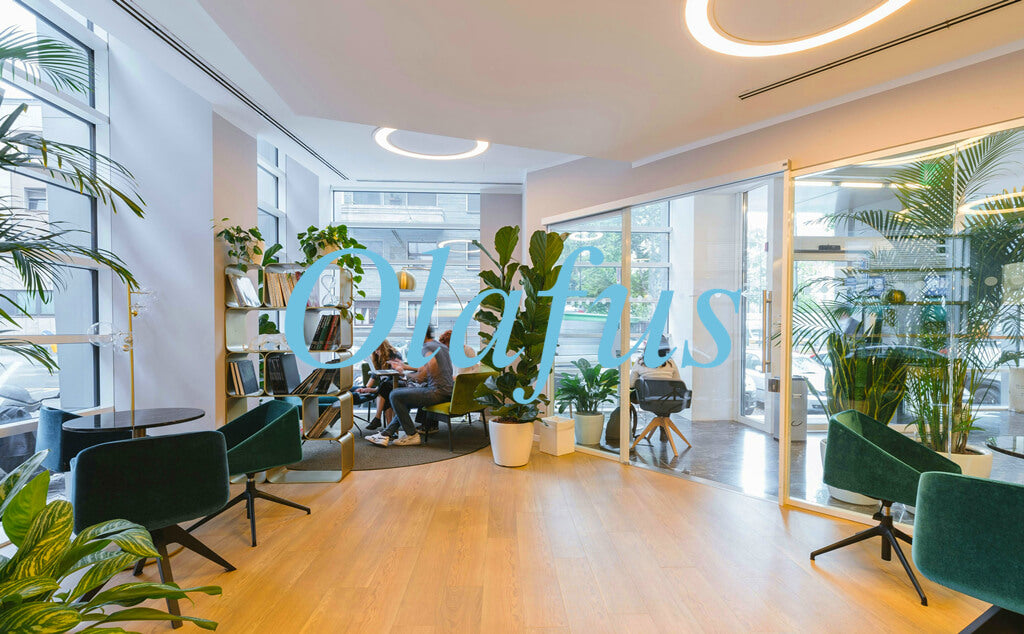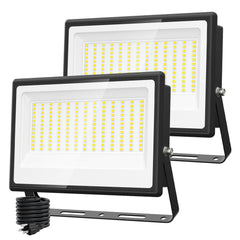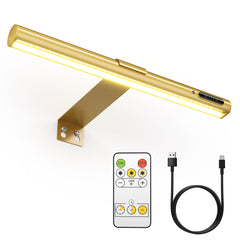
Are LED Lights Good for Office?
Share
In the modern office environment, lighting is not just about providing a source of light; it has a profound effect on employee productivity and health. A good lighting system can significantly increase employee productivity while improving their physical and mental health. This not only contributes to the overall performance of the organization, but also creates a more comfortable and healthier working environment.
Studies have shown that the quality of lighting has a direct impact on employee concentration and productivity. In a well-lit and evenly distributed work environment, employees are able to focus more on the task at hand, thus increasing productivity. Additionally, proper lighting can reduce eye fatigue and discomfort, preventing vision problems caused by long hours of work.
Not only that, but lighting also affects an employee's biological clock and mood. Natural light simulating LED lights can help regulate employees' biological clocks, reducing mental fatigue and mood swings caused by long hours of work. As a result, the overall work performance and satisfaction of employees will be improved.
Lighting not only affects vision, but also plays an important role in mental health. Warm, soft light creates a comfortable working environment and reduces stress and anxiety. Conversely, overly harsh or dim lighting can lead to discomfort and stress, which in turn affects employees' mood and performance.
Physiologically, good lighting can improve employees' posture and work habits. In a well-lit environment, employees don't need to work close to screens or desks, thus maintaining good sitting posture and reducing stress on the neck and back. In the long run, this helps to reduce the incidence of occupational diseases and improve the physical health of employees.
Advantages of Office LED Lights
High energy efficiency of LED lights
LED lights are extremely energy efficient, with luminous efficacy far exceeding that of traditional lighting. While traditional incandescent and fluorescent lamps convert most of their energy into heat, LED lamps convert more electrical energy directly into light energy, reducing energy waste. As a result, LED lights consume only 20% to 30% of the energy of traditional fixtures for the same brightness.
Energy cost savings
Due to the high energy efficiency of LED lights, they are able to significantly reduce electricity bills in the long run. For businesses, lighting is a major cost of daily operations. Using LED lights not only reduces energy consumption, but also effectively lowers overall operating costs. Especially in large offices and commercial spaces, the energy cost savings will be even more significant.
Lifespan of LED lights
LED lights have a much longer lifespan than traditional lamps. Generally speaking, the average lifespan of LED lamps can reach more than 50,000 hours, while traditional incandescent lamps have only about 1,000 hours and fluorescent lamps only 8,000 hours. Longer life means much less frequent replacement and less frequent maintenance work.
Reduced replacement and maintenance costs
The long life of LED lamps directly leads to lower replacement and maintenance costs. In business operations, reducing the frequency of lighting replacement not only saves money on purchasing new fixtures, but also reduces labor and time costs. For large-scale office buildings, this cost savings can be substantial.
Light quality of LED lights
The light emitted by LED lights is closer to natural light and has a higher color rendering index (CRI), which means that the colors of objects appear more realistic and vivid under LED lighting. Quality light not only enhances the visual effect of the office environment, but also reduces eye fatigue and protects the visual health of employees.
Improve the comfort of the working environment
Excellent lighting environment can significantly improve the work efficiency and comfort of employees. the non-strobe characteristics of LED lamps and lanterns make the light more stable, avoiding eye discomfort and headache problems caused by strobe. In addition, the dimming function of LED lights can adjust the brightness according to different time periods and work requirements, creating a more comfortable working environment for employees.
No mercury and hazardous substances
Unlike traditional fluorescent lamps and some incandescent lights, LED lights are free of mercury and other hazardous substances, which makes them less polluting to the environment during production and disposal. The use of LED lights not only helps to reduce the emission of hazardous substances, but is also in line with modern businesses' pursuit of environmental protection and sustainable development.
Recyclability and environmental advantages
Most of the materials used in LED lights are recyclable, which means that at the end of their life, the impact on the environment can be reduced through recycling. In addition, the high energy efficiency and long lifespan of LED lights reduces the waste of resources, further reflecting their environmental advantages.
LED lights in the Office
The application of LED lights in the office not only provides energy efficient lighting, but also creates a comfortable and healthy working environment. Below are a few common ways of specific applications of LED lights in offices:
Providing Uniform Lighting
Light strips and floodlights provide even lighting in offices, reducing shadows and bright spots. This even light not only improves overall visual comfort, but also reduces eye fatigue so that employees still feel relaxed after long hours of work. Even lighting helps employees focus better on their work, improving productivity and quality of work.
Suitable for different office layouts
Light strips and floodlights are highly flexible and can be installed and adjusted to suit different office layouts. Whether it's an open-plan office area, a separate office, or a conference room, these luminaires can be easily adapted. Strip lights can be recessed into ceilings, walls or floors to create a modern, uncluttered visual effect, while floodlights provide powerful accent lighting that enhances the layered and three-dimensional feel of the space.
Provide localized lighting
Table and cabinet lights are ideal for providing localized lighting. They can be placed on desks, workstations or filing cabinets to provide sufficient light for specific work areas. Localized lighting can help employees see details more clearly when working on delicate tasks, increasing productivity and accuracy.
Reduces Eye Strain
Proper localized lighting can help reduce eye fatigue, especially when using computers or reading documents for long periods of time. LED desk and cabinet lights can adjust the angle and brightness of the light as needed to ensure that the light does not shine directly into the eyes, thus protecting eyesight and enhancing work comfort.
Adjust the brightness as needed
Modern LED lights are often equipped with a dimming function that allows the user to adjust the brightness of the light according to different times of day and work requirements. In the morning, afternoon or night, different intensity of light can create different atmospheres to meet the diverse needs of employees. The dimming function can also be realized through an intelligent control system, which allows users to easily adjust the lighting settings via cell phone or computer.
Improve employee comfort and work efficiency
Dimming not only improves employee comfort, but also enhances work efficiency. Studies have shown that a proper lighting environment can significantly affect a person's mood and productivity.
By adjusting the brightness of the light, employees can find the lighting settings that best suit them for different tasks and time periods, resulting in better concentration and improved work performance.
In addition, the intelligent dimming system can be combined with the natural light source in the office to automatically adjust the indoor light, creating a more harmonious and energy-efficient working environment.
Best Picks Office Light Fixtures at Olafus
 |
 |
 |
 |
 |
 |
The application of LED lights in the office can not only provide high-quality lighting, but also flexibly adapt to the needs of various office environments. Through the rational use of light strips, floodlights, desk lamps, cabinet lights and dimming functions, the office can create a workspace that is both efficient and comfortable, significantly improving the work experience and productivity of employees.
More Posts

